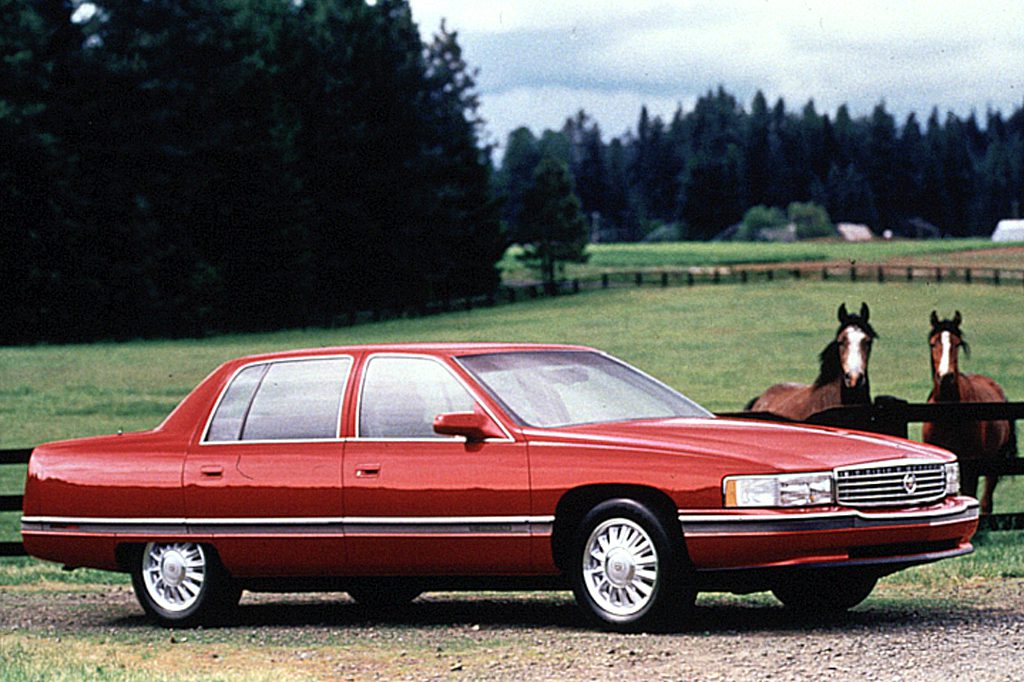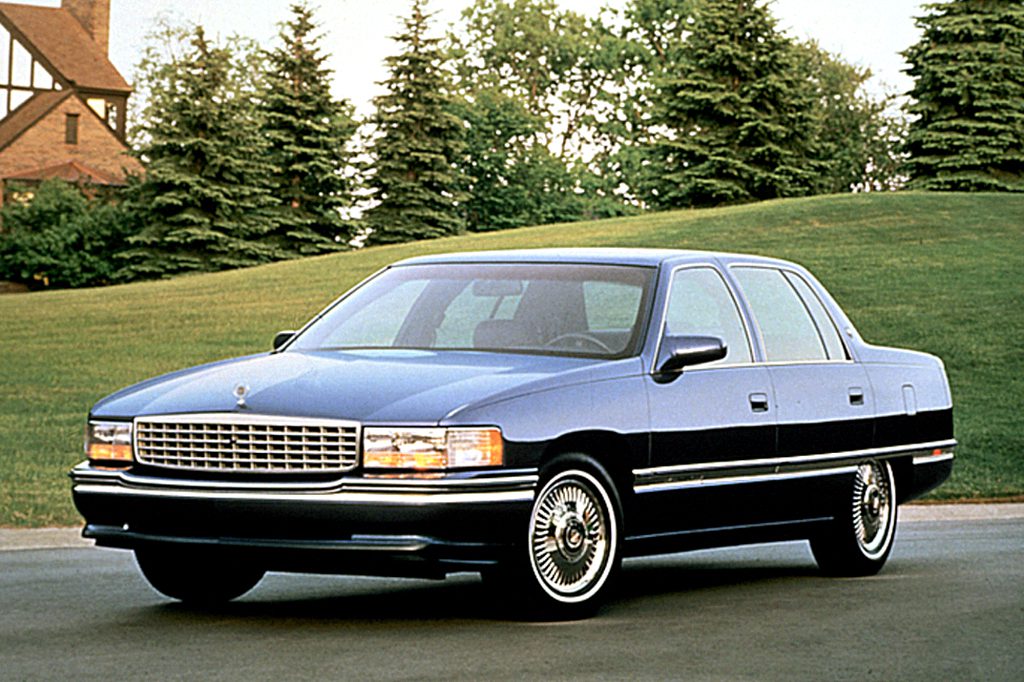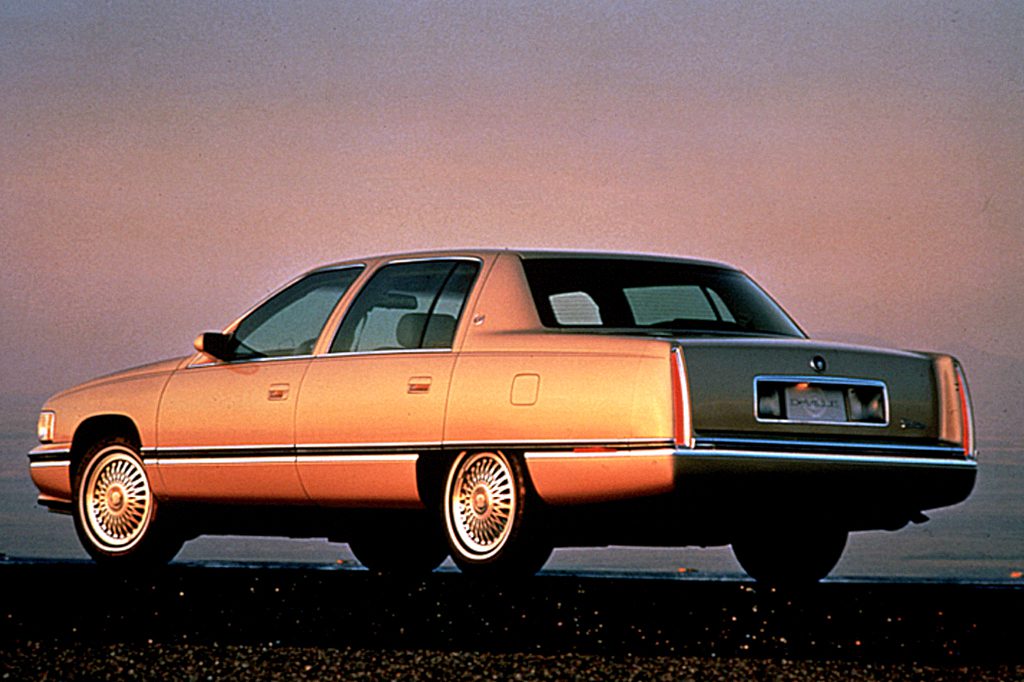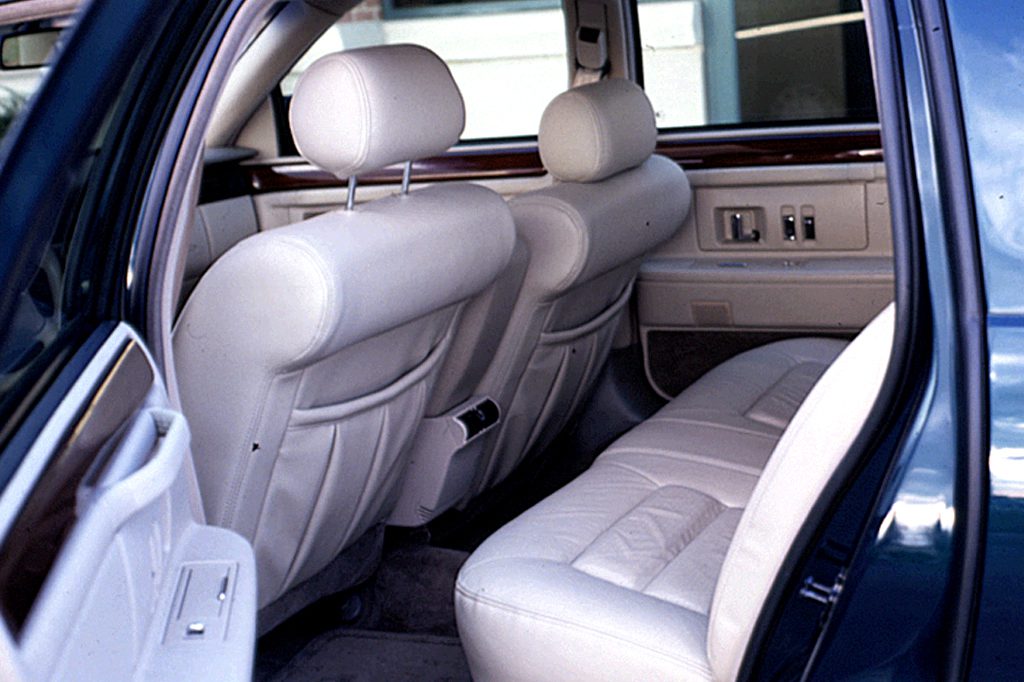| Premium large car; Built in USA |
|
|
| Good condition price range: $1,700 – $3,600* |

1994 Cadillac Sedan DeVille Concours

1995 Cadillac Sedan DeVille

1995 Cadillac Sedan DeVille

1994 Cadillac Sedan DeVille Concours interior

1994 Cadillac Sedan DeVille Concours interior
| Pros: |
|
| Cons: |
|
Don’t judge the latest DeVille and Concours just by their conservative styling, which continues to appeal mainly to older drivers. Both Cadillacs offer tempting performance and roomy accommodations, and represent good value for the money.
Overview
Cadillac’s best-seller was redesigned for 1994. The base model was called Sedan DeVille, while the top-of-the-line version earned a DeVille Concours designation. Both were 4-door sedans built on a 113.8-inch wheelbase. Overall length grew by 3.4 inches compared to ’93 sedans. No more Coupe DeVilles, Touring Sedans, or Sixty Specials made the lineup. Base DeVilles used an overhead-valve, 4.9-liter V8 engine. The Concours came with Cadillac’s potent 270-horsepower, 4.6-liter Northstar V8 and Road Sensing Suspension. That RSS setup adjusts firmness in milliseconds, based on vehicle speed and road conditions. Regular DeVilles had a Speed Sensitive Suspension, which adjusts firmness to one of three levels, based on car speed. Antilock all-disc brakes were standard. Outboard front seatbelts got a height-adjustment feature.
Yearly Updates
| 1995 DeVille/Concours Traction control was made standard across the board. The system also could now be switched off, if desired. New transmission fluid did not require changing for 100,000 miles. |
| 1996 DeVille/Concours All front-drive Cadillacs now carried one version or another of the 4.6-liter Northstar V8. Base DeVilles gained a 275-horsepower Northstar, while the Concours V8 rose to 300 horsepower. Daytime running lights were installed this year. Concours sedans added Rainsense to automatically turn on wipers when rain began, and magnetically operated variable-assist power steering. DeVilles gained a stainless-steel exhaust system and Road Sensing Suspension. New stereo systems included redundant controls on the steering wheel. New coolant was designed to last five years or 100,000 miles. |
| 1997 DeVille/Concours A new DeVille model, standard side airbags, and a mild facelift headline the list of changes for 1997. Joining the base DeVille and plusher Concours is a new mid trim level model, called the De Ville d’Elegance. It comes with more standard equipment than the base DeVille, chrome wheels and gold ornamentation. Plus, dual door-mounted airbags join the two dash-mounted airbags, antilock brakes, and traction control on the list of standard safety features. Styling alterations include a new grille, rounder rear-wheel openings to accommodate the car’s wider rear track, and a deeper rear fascia. |
| 1998 DeVille/Concours Changes were minimal for 1998, however, with the demise of the Fleetwood, the DeVille lineup became Cadillac’s largest cars. |
| 1999 DeVille/Concours Cadillac’s largest car saw a host of changes for ’99 including available massaging front seats on d’Elegance and Concours models. Other improvements include an electronic suspension with StabiliTrak. This system is designed to aid control in fast turns by selectively applying the front brakes. It was standard on the Concours and optional on others. In midyear, a Golden Anniversary option was added that included special white paint, wood interior trim, and 2-tone leather upholstery. The DeVille line was all-new for the 2000 model year. |
